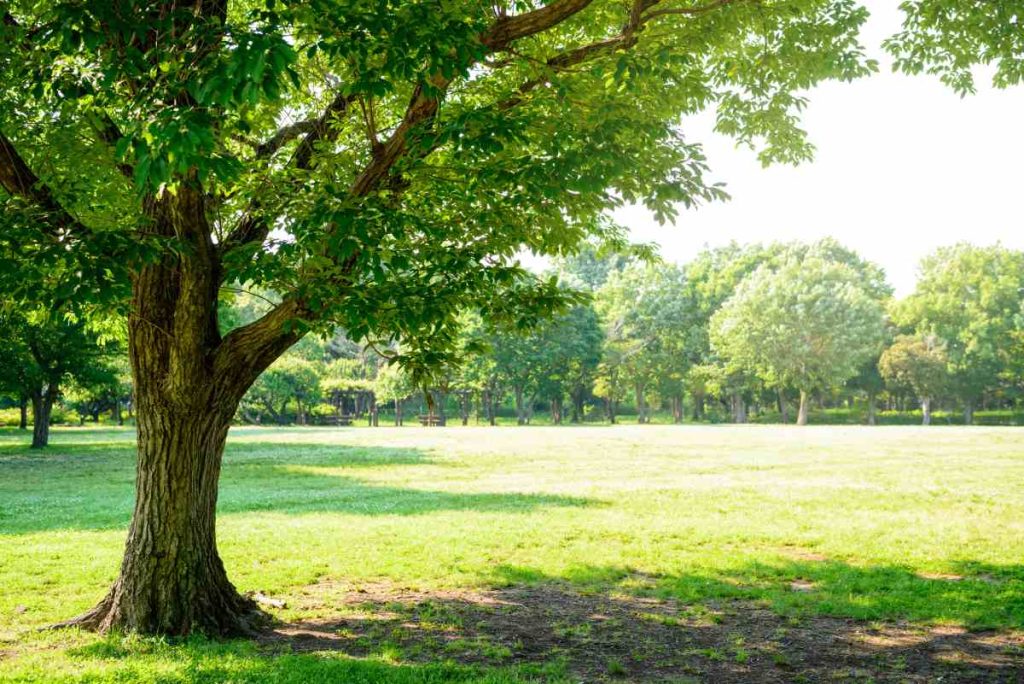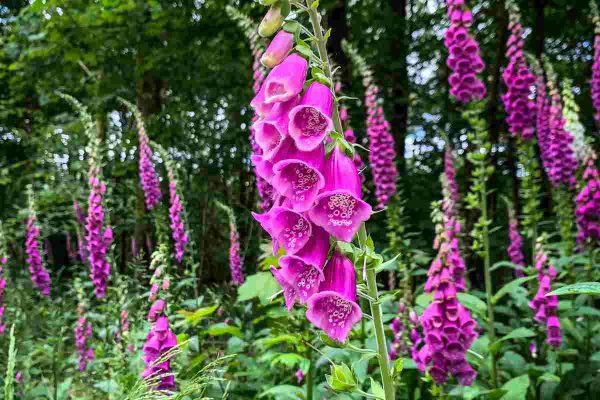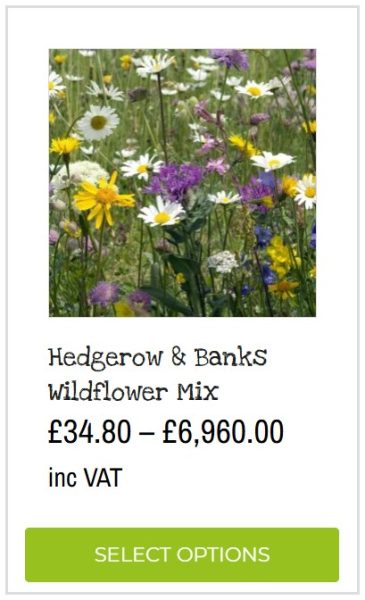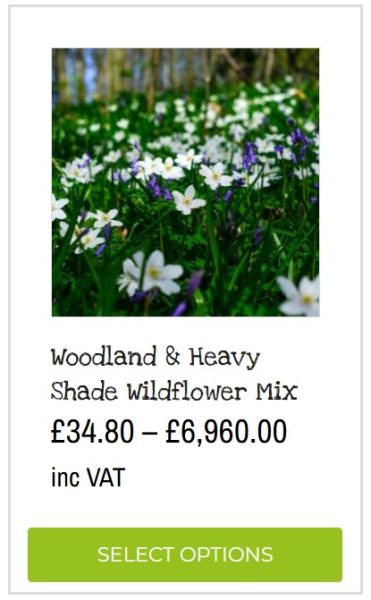Wildflower Seeds for Shady Areas: Locally Sourced Solutions for Thriving Low-Light Meadows
Shady areas in our gardens often present a unique challenge for planting. Many assume vibrant blooms and flourishing meadows require constant sunshine. However, with the right approach and carefully selected wildflower seeds, even the shadiest corners can be transformed into thriving havens of biodiversity. WildaHome, a family-owned UK business, specialises in locally sourced, native British wildflower seeds and seed mixtures, offering the perfect solutions for creating beautiful and ecologically beneficial wildflower meadows in any setting, including those with limited sunlight.
Understanding Shade and Its Impact
Shade isn’t a one-size-fits-all condition. It’s crucial to differentiate between partial, dappled, and deep shade. Partial shade refers to areas receiving several hours of direct sunlight, typically in the morning or afternoon. Dappled shade is filtered sunlight, like beneath a tree canopy, creating a mosaic of sun and shadow. Deep shade receives little to no direct sunlight, often found under dense trees or on the

north side of buildings. Understanding these nuances is key because shade affects plant growth in several ways. Reduced sunlight limits photosynthesis, impacting growth and flowering. It can also influence soil temperature and moisture, potentially creating conditions too cool or damp for some species.
Choosing the Right Wildflower Seeds for Shady Areas
Selecting the correct wildflower seeds is paramount. Shade-tolerant wildflowers have adapted to low-light conditions, often with larger leaves to capture more sunlight. Native wildflowers are particularly well-suited to shaded areas in the UK, having evolved over centuries to adapt to specific climate and soil conditions. When choosing a seed mix, consider the type of shade, the soil type, and your desired aesthetic. WildaHome offers a range of specially formulated seed mixes for various shade conditions. These locally sourced seeds are crucial for maintaining biodiversity and ensuring your meadow’s success. They are adapted to your region, making them more likely to germinate and flourish. WildaHome carefully selects and tests its seeds to ensure compatibility with UK shade areas, tailoring mixes to specific soil types and light levels. By choosing WildaHome’s native seed mixes, you actively contribute to preserving the UK’s natural flora and fauna, supporting local pollinators and creating healthy ecosystems.
Top Wildflower Species for Shady Areas

Several wildflower species thrive in shaded environments. For deep shade, consider woodland wildflowers like Bluebells (Hyacinthoides non-scripta), Wood Anemone (Anemone nemorosa), and Ramsons (Allium ursinum). Partially shaded borders can benefit from meadow wildflowers such as Foxgloves (Digitalis purpurea),
Hedge Woundwort (Stachys sylvatica), and Greater Stitchwort (Stellaria holostea). Incorporating wildflowers that bloom at different times of the year ensures continuous colour and interest.
Preparing and Sowing in Shady Areas
Proper preparation is essential. Assess the soil type and light received. Remove existing vegetation and debris, lightly cultivating the soil. Improve soil drainage and fertility by adding organic matter like compost. Follow the instructions provided for optimal sowing with your WildaHome seed mix. Generally, scatter seeds evenly over the prepared surface. Keep the soil consistently moist during germination, avoiding overwatering. The best time to sow is typically autumn or early spring.
Caring for Wildflowers in Shady Environments
Shaded areas retain more moisture, so avoid overwatering. Allow some wildflowers to go to seed for natural regeneration. Remove unwanted grasses or weeds that compete for resources.
Environmental and Aesthetic Benefits
Wildflower meadows in shaded areas offer numerous benefits. They support pollinators, enhance soil health, reduce erosion, and create a tranquil, beautiful space with minimal maintenance.
Why Wildahome Seeds Are Perfect for Shady Areas
WildaHome’s locally sourced seeds are ideal for creating thriving wildflower meadows in shaded areas. Our seeds are selected explicitly for UK conditions, including shaded environments. We are committed to sustainable and ecologically friendly solutions. Our customers have successfully transformed their shaded areas using WildaHome seeds.
FAQs About Wildflower Seeds for Shady Areas
Can wildflowers thrive in deep shade?
Some species can, but success depends on careful selection and preparation. How do locally sourced seeds enhance growth? They are adapted to your region, making them more resilient. What maintenance is needed? Primarily managing moisture and controlling competing vegetation.
What types of wildflowers thrive in shady areas in the UK?
Many native wildflowers are well-suited to shade. Consider species like Bluebells, Wood Anemone, and Ramsons for deep shade. The partial shade allows wildflowers like Foxgloves, Hedge Woundwort, and greater stitchwort. The specific type of shade (dappled, partial, deep) will influence which species flourish.
How do I prepare a shady area for wildflower sowing?
First, assess the type of shade and soil. Remove existing vegetation and debris. Lightly cultivate the soil and incorporate organic matter like compost to improve drainage and fertility. A well-prepared seedbed is crucial for successful germination.
When is the best time to sow wildflower seeds in shady areas?
The ideal time is typically autumn or early spring. Sowing in these seasons allows seeds to benefit from cooler temperatures and more consistent moisture, promoting germination.
How do I sow wildflower seeds in a shady area?
Follow the instructions on your seed packet, as specific recommendations may vary. Generally, scatter seeds evenly over the prepared soil surface. Lightly rake or press the seeds into the soil to ensure good contact.
How much maintenance do wildflowers in shady areas require?
Shady areas often retain more moisture, so avoid overwatering. Allow some wildflowers to go to seed to encourage natural regeneration. Control competing grasses and weeds that might outcompete your wildflowers. Once established, maintenance is generally minimal.
Can I create a wildflower meadow in deep shade?
While challenging, it’s possible. Choose species specifically adapted to deep shade, like those found in woodlands. Ensure the area isn’t excessively damp, and be patient, as the establishment might take longer.
Why are locally sourced wildflower seeds better for shady areas?
Locally sourced seeds are adapted to your region’s specific climate and soil conditions. This makes them more resilient and likely to thrive than seeds from other areas. They also contribute to preserving local biodiversity.



